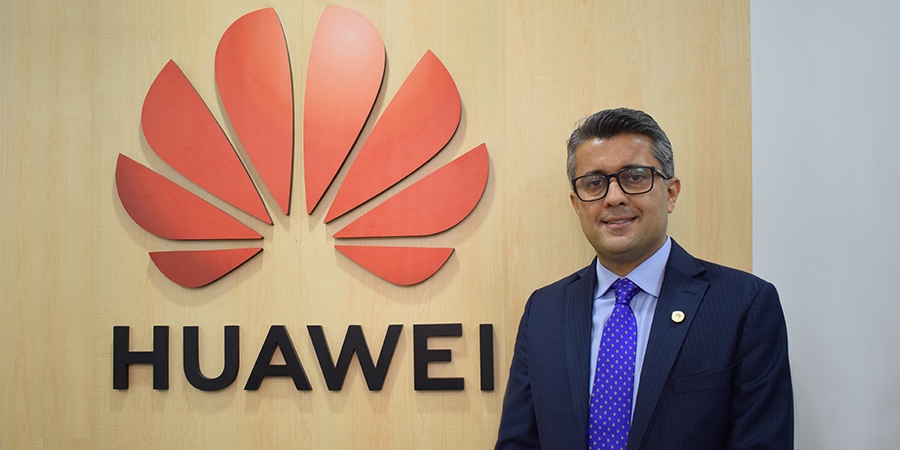Telecom Review spoke to Faisal Ameer Malik, CTO of Enterprise Business Group, Huawei Middle East, who shared his insights on Huawei’s efforts in creating a truly modern ICT ecosystem in the region.
Over 140 countries are participating in this year’s GITEX, underscoring the growing importance of the ICT sector in today’s world. What has been Huawei’s mandate in supporting collaboration, innovation and growth of the entrepreneurship ecosystem through this platform?
Huawei’s approach toward the ICT industry is an open-minded one. We are working with customers across industries, be it smart cities, transportation, manufacturing, logistics, industry 4.0 and so on. With our ICT infrastructure solution and portfolio, we are open to collaborating with any kind of industry players – for example, ISVs and startups – who can add value to the solutions we are providing to our customers. We are also working with application developers who can solve the problems of our customers and jointly build dedicated platforms. We do this through Huawei’s Open Lab program, where we collaborate on presenting integrated solutions to customers. We also give these startups a platform to test their solutions and products with us. We also do joint marketing with these companies whereby they use our marketing and sales platform to offer solutions and services to our customers.
By year’s end, Huawei Cloud will operate 75 availability zones in 29 regions around the world. How will this help the enterprise services in the region and globally, especially with the Everything as a Service model?
Cloud adoption was always growing, but after the COVID-19 pandemic, it has accelerated and become a mandatory part of the enterprise strategy. Private cloud and public cloud are no longer different entities and are emerging as multi-cloud environments. In such an environment, where industries are increasingly adopting the cloud, we cannot be limited in terms of the services we are offering to our customers. Hence, Huawei’s Everything as a Service model caters to all industries across the education, government, transportation and finance sectors, to name a few. We provide the cloud platform that is ready to bring them on board and provide the kind of digital transformation journey they are looking for.
The development and adoption of new technologies are accelerating, and the need to keep pace with these advancements is proving detrimental to the viability and relevance of organizations big and small. In terms of empowering the workforce, in what ways is Huawei contributing that can truly push forward the digital transformation agenda taking place in various organizations?
It is not only technology that will drive the overall digital transformation scenario of a country or industry. It has to be technology, people, the environment and the business. Everything has to work together. We are running ICT programs at the country, academia and organization levels with certification and training on Huawei’s different portfolio of technologies to help the industry workforce adapt to new technologies so that they can go back and help their organizations transform digitally in the right direction.
How is Huawei helping the enterprise sector to meet its sustainable development goals as stipulated by the United Nations? What, in your opinion, are the existing challenges to fulfilling these ambitions regionally as well as globally?
While the world is trying to go green, the carbon footprint may increase as our dependency on technology grows. Whether it is about networks, data centers or rolling out infrastructure, we have to ensure that they have a low-carbon footprint from the component to the solution level. Motivated by the importance of energy efficiency and environmentally friendly operations, Huawei has come up with a lot of innovative solutions. For example, in data centers, we are utilizing cutting-edge technology to bring down the overall power consumption and using big data and AI technologies to help us do that. In a campus environment, we have optical campus networks with a minimal footprint of power consumption with active power elements by introducing all fiber rather than copper as network links. At every layer of our enterprise and consumer operations, we are working towards cutting down the overall carbon footprint, power consumption or energy wastage.
